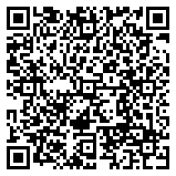ISSN: 2664-2891
Editorial process and flow
- All manuscripts are received and managed through the Open Journal System (OJS) software. To do this, authors must register on the platform beforehand:
https://revistascientificas.upacifico.edu.py/index.php/PublicacionesUP_Salud/about/submissions - Once the manuscript is submitted by the author, it is reviewed and validated by the Editor of the scientific journal, who verifies that it meets the journal’s thematic scope and formatting requirements. It is then forwarded to the Editorial Team (Technical Support), which is responsible for evaluating the percentage of text similarity using the Strikeplagiarism software.
If the manuscript presents a similarity score above 20% or if duplicate publication is detected, the Editor will be notified, who will in turn inform the author. - All manuscripts will be initially reviewed by the Editorial Team, with the aim of assessing thematic relevance, originality, and compliance with the journal’s editorial guidelines. If the manuscript passes this stage, a review of the bibliographic references will be conducted in accordance with Vancouver Style.
- If the manuscript is considered suitable to continue the editorial process, the Editor-in-Chief may assign an Associate Editor, an expert in the subject area of the article, to oversee the peer review process. This assignment must ensure the absence of conflicts of interest, in accordance with COPE guidelines. Editors will have a maximum of 3 weeks to inform the authors whether the manuscript has been accepted for peer review.
- The Editor will send the manuscript to reviewers under a double-blind peer review process, who will issue one of the following decisions: acceptance, request for minor revisions, request for major revisions, or rejection. The review must be critical, objective, and thorough, with a focus on the scientific quality of the work. The report will be submitted to the Editor and then forwarded to the author.
Reviewers will have a maximum of 3 weeks to complete their evaluations.
The possible reviewer decisions are:
- Accepted: The article is suitable for publication without changes or with only minor corrections.
- Accepted with revisions: The author must implement the suggested changes and resubmit the manuscript for further evaluation.
- Rejected: The article does not align with the journal’s theme, policies, and/or standards, or requires substantial modifications. It may not be resubmitted for a period of 6 months.
Manuscripts requiring modifications must be corrected and returned by the authors within the timeframe established by the Editorial Team, clearly outlining the changes made.
In the case of conflicting reviewer reports, a third reviewer will be assigned to provide a final decision.
- Once the author receives the reviewers’ feedback, they must make the necessary corrections and incorporate the suggested revisions within the deadline set by the Editorial Office. The maximum time to respond to the first round of comments is 45 calendar days, starting from the date the review report was sent.
If this deadline is missed without justification, the manuscript will be automatically rejected.
In cases of force majeure, the author may request an extension by submitting a formal letter before the original deadline expires. - Once the manuscript is accepted, it will be sent to the Technical Team for editing, copyediting, style correction, layout, and final publication.

















 All the contents of this journal are licensed under a
All the contents of this journal are licensed under a 